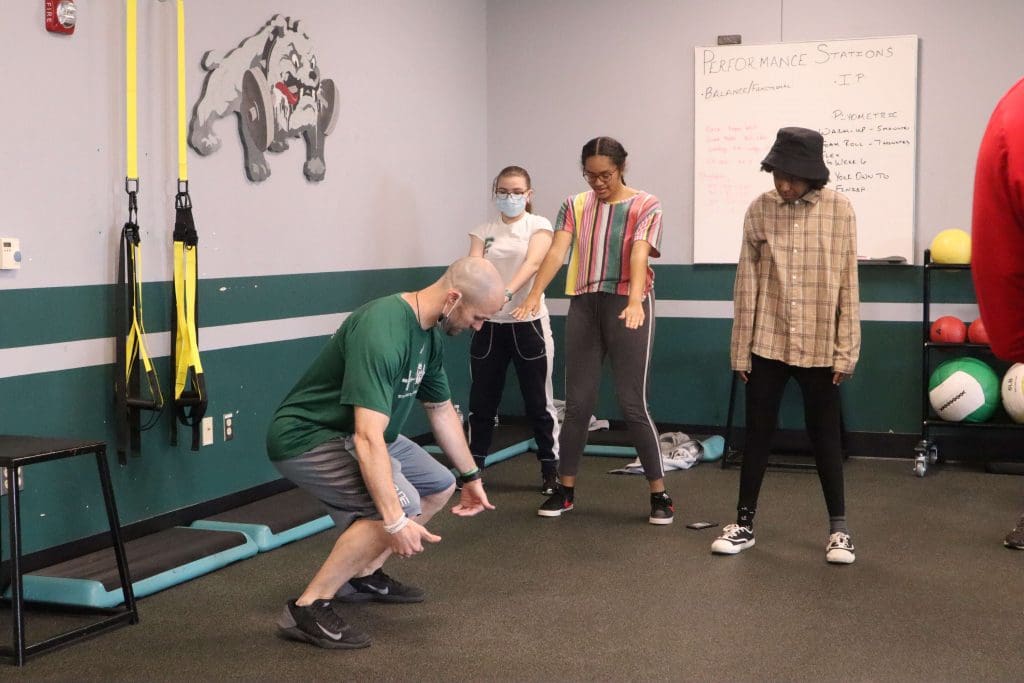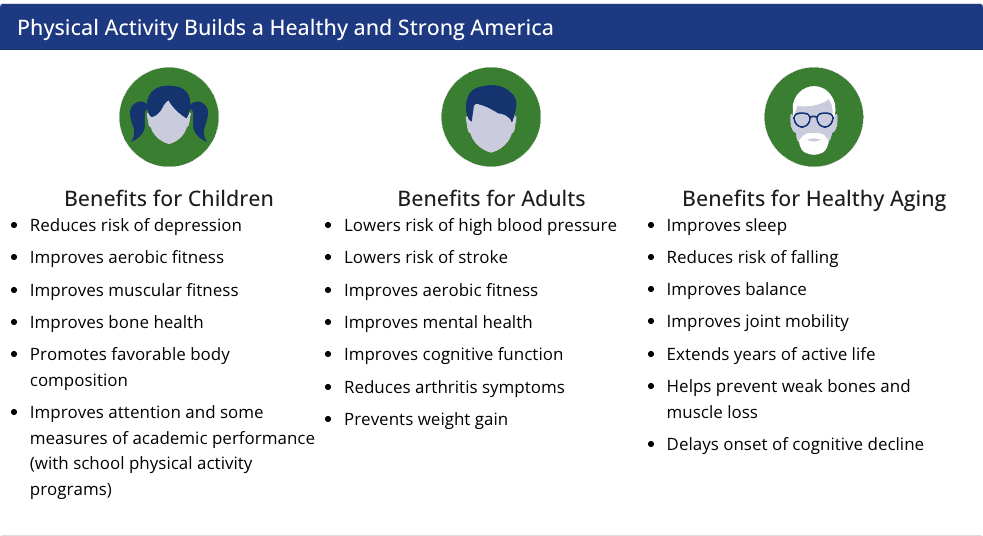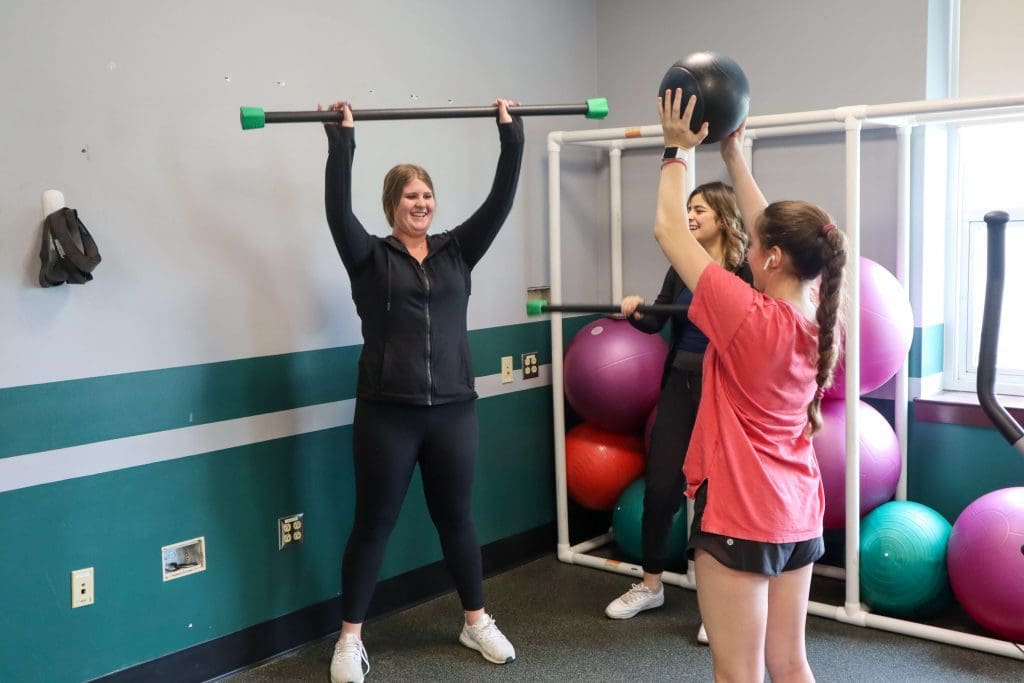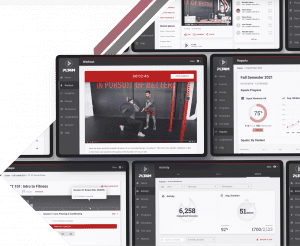Functional fitness is any exercise or workout that improves your body’s natural movement patterns. This type of exercise emphasizes functional movements that can be used in everyday life. It is designed to increase strength, power, mobility, and balance, while improving overall health and wellbeing. This article will discuss what functional fitness is, why it is important, and how to incorporate it into physical education and everyday life.
What is Functional Fitness?
Functional fitness is any type of exercise or workout that translates to the demands of everyday activities. And our daily lives require a wide range of skills and abilities. Rather than hyper-focusing on one element of physical fitness (muscular strength, aerobic endurance, etc.), functional fitness training develops the complete picture of physical function and fitness.
And while the demands of everyday life have certainly changed over the years, we still need our bodies ready to take on everyday movements and daily tasks.
For example, even something as simple as sitting or standing requires muscular strength, mobility, and more. A more rigorous example is lifting and moving objects around the house. We need functional strength and muscular endurance to thrive in everyday life.

Functional Fitness Training Examples
There are endless options for functional training. Functional training can look and feel different depending on the individual’s abilities and interests.
For example, a functional fitness workout could center around all body weight functional fitness exercises like squat, lunge, hinge, press, and pull. But functional training can also incorporate different strength training movements with free weights and other equipment. Many people often cite compound exercises as the foundation for functional fitness.
But functional training is not reserved just for traditional gym and fitness center workouts. Individuals can achieve the core elements of functional training via yoga, dance, boxing, bootcamp, pilates, and a wide range of other fitness modalities.
At the heart of functional fitness is the ability to better perform and execute everyday activities. And this can be accomplished through a wide range of functional training modalities.

Functional Fitness Misconceptions
Just because we are looking to improve daily life, doesn’t mean functional fitness exercises need to look exactly the same as our daily activities.
For example, gyms and fitness centers don’t need to start having full grocery bags as equipment! But different exercises and movements can better prepare us to carry out tasks like lugging our groceries! Don’t overthink functional training. Many different types of general physical fitness options can apply!
The Importance of Functional Fitness
Everyone benefits from functional fitness! At every age level, we see the need for improved physical fitness:
Per the CDC, less than one-quarter (24%) of children 6 to 17 years of age participate in 60 minutes of physical activity every day.
About 1 in 2 adults live with a chronic disease. About half of this group have two or more. Moreover, Only half of adults get the physical activity they need to help reduce and prevent chronic diseases.
Studies have shown that about 30% of older adults over age 70 have trouble with walking, getting up out of a chair, or climbing stairs. In addition to making everyday tasks difficult, mobility limitations are also linked to higher rates of falls, chronic disease, nursing home admission, and mortality.
Every age level can benefit from increased physical activity and physical fitness. Just look at the whole host of benefits for different age groups below.

Building Functional Fitness Skills For Life
While we believe in the importance of functional fitness training at every age level, at PLT4M, we focus on our youth! By instilling lifelong fitness skills at a young age, we can create a healthier generation that will benefit from physical fitness for many years to come.
Let’s look at three key steps to empowering students with functional movement skills they can use for the rest of their lives through PE lesson plans.
1) Build A Strong Foundation
Any functional fitness training requires a strong foundation. At PLT4M, we build this strong foundation through body weight exercises. In our Intro to Fitness series, we start by introducing and reviewing foundational human movements:
- Squat
- Lunge
- Hinge
- Press
- Pull
(Note: Some people refer to these as fundamental human movements.) Both names are appropriate and highlight these movements’ importance in our daily activities and everyday life.
Check out a PLT4M instructor breaking down the points of performance to the hip hinge via a good morning. This is an excellent example of functional fitness training because bending over and picking things up off the ground safely requires a proper hip hinge.
2) Introduce Strength Training To Everyone
Over the years, strength training has often been associated to bodybuilders or high-performance athletes. But strength training isn’t just lifting heavy objects. Instead, strength training with free weights or other equipment can help to develop the overall strength that every individual needs for daily activities.
In this portion of our teaching, students learn different compound exercises via medballs, dumbbells, and eventually barbells.
Check out a PLT4M instructor breaking down the points of performance to the overhead barbell strict press. This is an excellent example of functional fitness training because the movement requires core stability, overhead mobility, and muscular strength. All of these translate to putting groceries or household items away on overhead shelves.
Ready to Learn More?
Schedule a free 10 minute consultation to see how PLT4M can help save you time and empower student learning!
3) Provide Choice and Options For Functional Fitness Training
Once students have been exposed to some of the foundational elements of functional fitness training via bodyweight exercises and strength training, many schools open up different options for students to explore.
For example, different types of functional exercises can be seen yoga, dance, boxing, bootcamp, pilates, and more. Let’s look at yoga more closely to elaborate.
Yoga has all sorts of functional fitness exercises. Within a yoga flow, students can begin to develop muscle strength, range of motion, mobility, core strength, and more. These different elements help improve physical function and translate to daily life. Check out a full yoga flow from PLT4M below.
Key Takeaways on Functional Fitness Training
Functional fitness can benefit all individuals, from young students to older adults. More importantly, functional training can and should start as early as school via physical education.
As more schools shift to a fitness-focused curriculum to support students’ lifelong pursuit of health and wellness, functional fitness plays a key role. Introducing students to different fitness exercises and workouts via PE lesson plans can enhance overall physical activity and physical fitness.
Functional training is for everyone. Let’s start by equipping and empowering the next generation with these lifelong skills!











